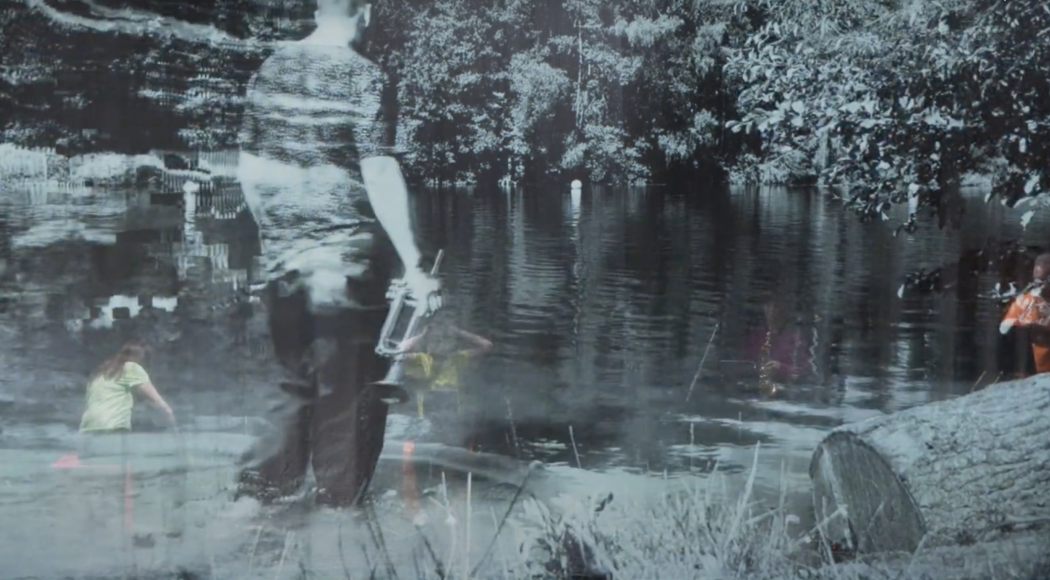Villa Massimozu Gast in HELLERAU,#2-2022
Since 2018, the “4:3 Kammer Musik Neu” festival in HELLERAU has been presenting experimental contemporary music and contemporary art every November, which is dedicated to relationships and constellations of spaces, artistic parameters and also between artists and recipients. With Ensemble Decoder, AuditivVokal Dresden, Ensemble Modern and others, world premieres and adaptations by Rebecca Saunders, Alexander Schubert, Robert Henke, Shiva Feshareki, Ragnar Kjartansson and Brigitta Muntendorf were on the programme.
In November 2022, a special concert with prizewinners from the Villa Massimo classes of 2020 to 2022 is planned in Rome as part of “4:3”. The Prize of the German Academy Rome Villa Massimo is considered the most important award for German artists and artists working in Germany through scholarships abroad. It is awarded annually to nine artists or artistic collectives from the fields of architecture, visual arts, musical composition and literature. “For many years, the Villa Massimo presented itself during one night in the Gropius-Bau in Berlin. Now the German Academy has set out to find partners in the various German states to dedicate space and time in their homeland to the Rome Prize winners and their work from the Eternal City,” says Villa Massimo director Julia Draganović, explaining her plan to present Rome Prize winners in Dresden. “What really promises success in Dresden is the fact that the Staatliche Kunstsammlungen Dresden is not only a renowned partner for the visual artists and architects, but that the composers who have been awarded the Rome Prize within the framework of excellence promotion also find professional concert organisers of excellent reputation in HELLERAU – Europäisches Zentrum der Künste and the Jazzclub Tonne. Unsuk Chin, Hanna Hartman, Andrej Koroliov and Hans Lüdemann have accepted the invitations to Dresden with great pleasure.”
Curator, literature and art scholar Julia Draganović moved from Kunsthalle Osnabrück to Rome after posts in Weimar, Florida and New York, where she has been director of the German artist residency Villa Massimo since July 2019. In her first year as director, she focused programmatically on openings, wanting to counteract the mighty outer walls of the grounds and the impression of a fortress. New and biodiverse concepts for the gardens were developed, the company’s own motorbike was exchanged for an e-bike. But then Corona came along and their exciting project “Arte per i vicini” (Art for the Neighbours), in which the outer walls became exhibition spaces for artistic projects, suddenly addressed the (non-)permeability of walls and façades in a completely different way. And the plan to present Rome Prize winners in Germany was also given a new context by the lockdown situation.
In Dresden, the current prizewinners have created a place of examination of our time and the question of how the world will change with their works from the fields of visual arts, architecture and literature and under the title “Eppur si muove – und sie bewegt sich doch! – Villa Massimo zu Gast im Japanischen Palais” from 24 June to 25 September 2022. The title takes up a comment by the physicist Galileo Galilei, who had to renounce his discovery before the Pope in Rome that we, as inhabitants of the earth, are not the centre of the universe. The prizewinners in the music category will be presented on 5 November 2022 in HELLERAU: The pianist Yejin Gil will portray the composer Unsuk Chin with six piano sonatas, Hanna Hartman will present a new project created in Rome with the video artist Dafne Narvaez Berlfein, and Andrej Koroliov will present the project Epilog:Abriss with Heinrich Horwitz, Rosa Wernecke and LUX:NM.
03. – 06.11.2022
4:3 Kammer Musik Neu
Festival
with ZEITKRATZER, ensemble courage, Quatuor Bozzini, Ensemble LUX:NM and works by Unsuk Chin, Alexandre David, Hanna Hartmann, Andrej Koroliov and Stefan Prins, among others.
In cooperation with Staatliche Kunstsammlungen Dresden/Japanisches Palais, Deutsche Akademie Rom Villa Massimo and Le Vivier Montréal. Funded within the framework of the Alliance of International Production Houses by the Federal Government Commissioner for Culture and the Media.


